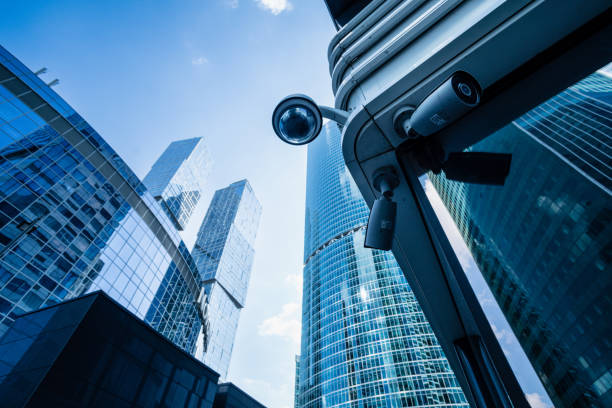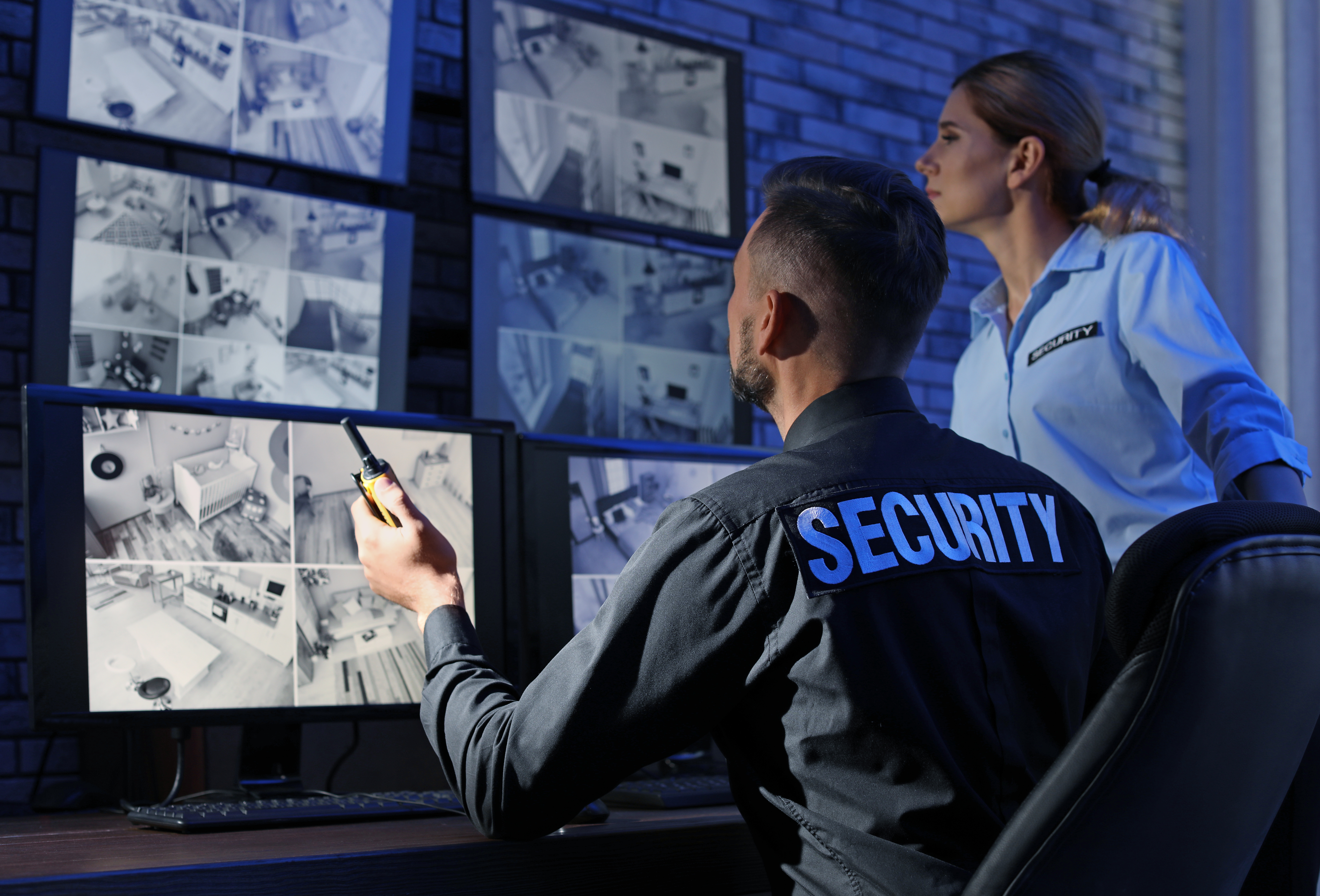A Plan for Corporate Security Excellence: Protecting Your Business
A Plan for Corporate Security Excellence: Protecting Your Business
Blog Article
From Cybersecurity to Physical Actions: Reinforcing Business Security in an Altering World
By integrating the staminas of both cybersecurity and physical safety and security, business can create a detailed defense technique that deals with the diverse range of threats they encounter. In this conversation, we will certainly check out the altering risk landscape, the requirement to integrate cybersecurity and physical safety and security, the implementation of multi-factor verification actions, the value of worker understanding and training, and the adaptation of protection procedures for remote labor forces. By analyzing these essential areas, we will certainly get important insights right into exactly how companies can enhance their corporate security in an ever-changing globe.
Understanding the Transforming Danger Landscape
The progressing nature of the modern globe necessitates a comprehensive understanding of the transforming risk landscape for effective business safety and security. In today's digital and interconnected age, threats to company safety and security have come to be a lot more complex and sophisticated. As innovation advancements and businesses end up being progressively reliant on electronic framework, the capacity for cyberattacks, information breaches, and other protection breaches has significantly boosted. It is crucial for companies to remain informed and adapt their protection measures to attend to these evolving dangers.
One secret facet of recognizing the altering hazard landscape is identifying the different kinds of risks that organizations deal with. Cybercriminals are regularly creating brand-new strategies to manipulate susceptabilities in computer system systems and networks. These hazards can vary from malware and ransomware strikes to phishing rip-offs and social design tactics. Additionally, physical threats such as theft, vandalism, and corporate espionage remain common issues for services.
Tracking and examining the danger landscape is crucial in order to recognize prospective risks and vulnerabilities. This entails remaining updated on the most up to date cybersecurity trends, assessing danger intelligence records, and performing normal risk evaluations. By recognizing the altering threat landscape, companies can proactively execute appropriate protection procedures to mitigate threats and safeguard their assets, online reputation, and stakeholders.
Integrating Cybersecurity and Physical Safety
Integrating cybersecurity and physical protection is important for comprehensive company protection in today's interconnected and electronic landscape. As companies increasingly count on technology and interconnected systems, the borders between physical and cyber hazards are ending up being blurred. To effectively secure versus these risks, an all natural approach that integrates both cybersecurity and physical security procedures is essential.
Cybersecurity concentrates on protecting digital properties, such as data, networks, and systems, from unauthorized gain access to, disturbance, and theft. Physical safety and security, on the various other hand, incorporates measures to protect physical properties, individuals, and centers from risks and susceptabilities. By integrating these two domains, companies can resolve vulnerabilities and dangers from both electronic and physical angles, consequently enhancing their total safety and security posture.
The integration of these 2 disciplines enables a more detailed understanding of safety threats and makes it possible for a unified response to events. As an example, physical gain access to controls can be boosted by incorporating them with cybersecurity methods, such as two-factor verification or biometric recognition. Likewise, cybersecurity procedures can be enhanced by physical safety and security procedures, such as surveillance cams, alarm systems, and secure accessibility factors.

Carrying Out Multi-Factor Verification Procedures
As companies progressively prioritize extensive safety procedures, one efficient strategy is the implementation of multi-factor authentication actions. Multi-factor authentication (MFA) is a safety approach that requires individuals to give multiple types of recognition to access a system or application. This approach adds an additional layer of defense by combining something the individual understands, such as a password, with something they have, like a safety and security or a finger print token.
By executing MFA, organizations can dramatically enhance their safety and security position - corporate security. Standard password-based verification has its constraints, as passwords can be conveniently endangered or neglected. MFA minimizes these risks by including an see additional verification element, making it harder for unapproved individuals to access to sensitive information
There are several types of multi-factor authentication methods available, including biometric authentication, SMS-based verification codes, and equipment symbols. Organizations require to analyze their details requirements and choose the most appropriate MFA solution for their demands.
However, the implementation of MFA ought see this site to be very carefully intended and implemented. It is essential to strike a balance between safety and functionality to stop individual frustration and resistance. Organizations ought to likewise take into consideration possible compatibility problems and provide adequate training and assistance to make sure a smooth transition.
Enhancing Staff Member Understanding and Training
To enhance company security, organizations need to focus on boosting worker recognition and training. Many safety violations occur due to human mistake or lack of recognition.
Effective staff member recognition and training programs ought to cover a wide variety of subjects, consisting of information defense, phishing strikes, social engineering, password hygiene, and physical safety and security procedures. These programs must be customized to the specific needs and responsibilities of different employee roles within the organization. Regular training sessions, simulations, and workshops can assist workers establish the required skills and knowledge to identify and respond to protection dangers effectively.
Moreover, organizations need to urge a culture of security recognition and supply ongoing updates and reminders to maintain workers notified about the most up to date threats and mitigation strategies. This can be done via interior communication channels, such as newsletters, intranet websites, and e-mail projects. By fostering a security-conscious labor force, organizations can dramatically lower the likelihood of safety and security events and protect their beneficial possessions from unapproved gain access to or compromise.

Adapting Safety And Security Actions for Remote Labor Force
Adapting business safety and security actions to fit a remote labor force is essential in guaranteeing the defense of delicate details and assets (corporate security). With the enhancing pattern of remote job, companies must execute suitable safety actions to mitigate the risks related to this brand-new means of working
One important facet of adapting safety procedures for remote job is developing secure communication channels. Encrypted messaging systems and digital private networks (VPNs) can help secure sensitive information and avoid unapproved access. Additionally, organizations should apply using solid passwords and multi-factor authentication to enhance the security of remote access.
An additional crucial factor to consider is the application of protected remote access remedies. This includes supplying workers with secure accessibility to company resources and data through digital desktop computer infrastructure (VDI), remote desktop computer methods (RDP), or cloud-based remedies. These innovations make sure that sensitive info stays safeguarded while making it possible for workers to perform their roles efficiently.

Finally, thorough security understanding training is vital for remote staff members. Training sessions should cover finest methods for firmly accessing and taking care of sensitive information, determining and reporting phishing efforts, and preserving the total cybersecurity health.
Conclusion
In verdict, as the danger landscape continues to evolve, it is crucial for companies click to read more to enhance their safety and security measures both in the cyber and physical domain names. Incorporating cybersecurity and physical safety, executing multi-factor authentication measures, and boosting worker awareness and training are essential actions towards attaining robust corporate safety.
In this discussion, we will certainly check out the changing hazard landscape, the requirement to integrate cybersecurity and physical security, the execution of multi-factor authentication procedures, the relevance of worker understanding and training, and the adjustment of safety and security steps for remote workforces. Cybersecurity actions can be matched by physical safety and security actions, such as security cams, alarms, and safe access factors.
As organizations significantly prioritize thorough safety and security actions, one effective technique is the implementation of multi-factor authentication steps.In final thought, as the threat landscape continues to progress, it is crucial for organizations to reinforce their security measures both in the cyber and physical domains. Incorporating cybersecurity and physical protection, implementing multi-factor authentication procedures, and boosting staff member awareness and training are vital actions in the direction of attaining robust business safety.
Report this page